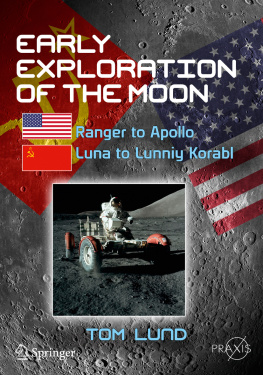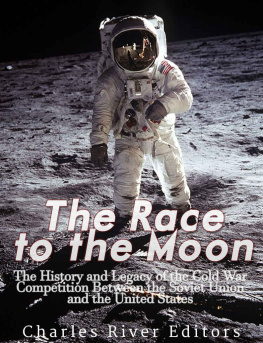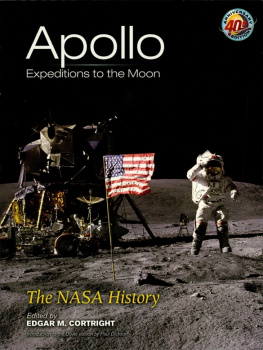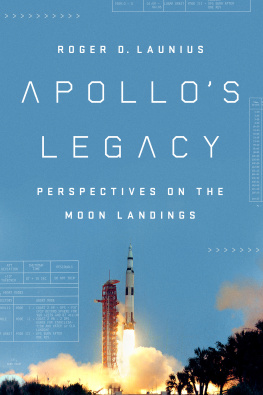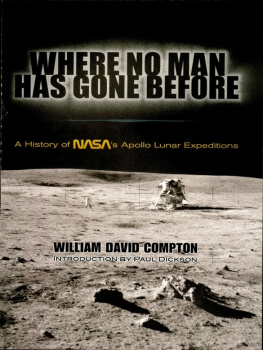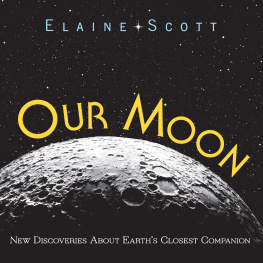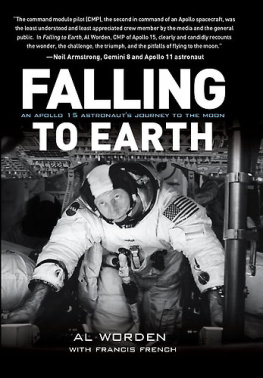Tom Lund - Early Exploration of the Moon: Ranger to Apollo, Luna to Lunniy Korabl
Here you can read online Tom Lund - Early Exploration of the Moon: Ranger to Apollo, Luna to Lunniy Korabl full text of the book (entire story) in english for free. Download pdf and epub, get meaning, cover and reviews about this ebook. year: 2018, publisher: Springer, genre: Science. Description of the work, (preface) as well as reviews are available. Best literature library LitArk.com created for fans of good reading and offers a wide selection of genres:
Romance novel
Science fiction
Adventure
Detective
Science
History
Home and family
Prose
Art
Politics
Computer
Non-fiction
Religion
Business
Children
Humor
Choose a favorite category and find really read worthwhile books. Enjoy immersion in the world of imagination, feel the emotions of the characters or learn something new for yourself, make an fascinating discovery.
Early Exploration of the Moon: Ranger to Apollo, Luna to Lunniy Korabl: summary, description and annotation
We offer to read an annotation, description, summary or preface (depends on what the author of the book "Early Exploration of the Moon: Ranger to Apollo, Luna to Lunniy Korabl" wrote himself). If you haven't found the necessary information about the book — write in the comments, we will try to find it.
Tom Lund: author's other books
Who wrote Early Exploration of the Moon: Ranger to Apollo, Luna to Lunniy Korabl? Find out the surname, the name of the author of the book and a list of all author's works by series.
Early Exploration of the Moon: Ranger to Apollo, Luna to Lunniy Korabl — read online for free the complete book (whole text) full work
Below is the text of the book, divided by pages. System saving the place of the last page read, allows you to conveniently read the book "Early Exploration of the Moon: Ranger to Apollo, Luna to Lunniy Korabl" online for free, without having to search again every time where you left off. Put a bookmark, and you can go to the page where you finished reading at any time.
Font size:
Interval:
Bookmark:
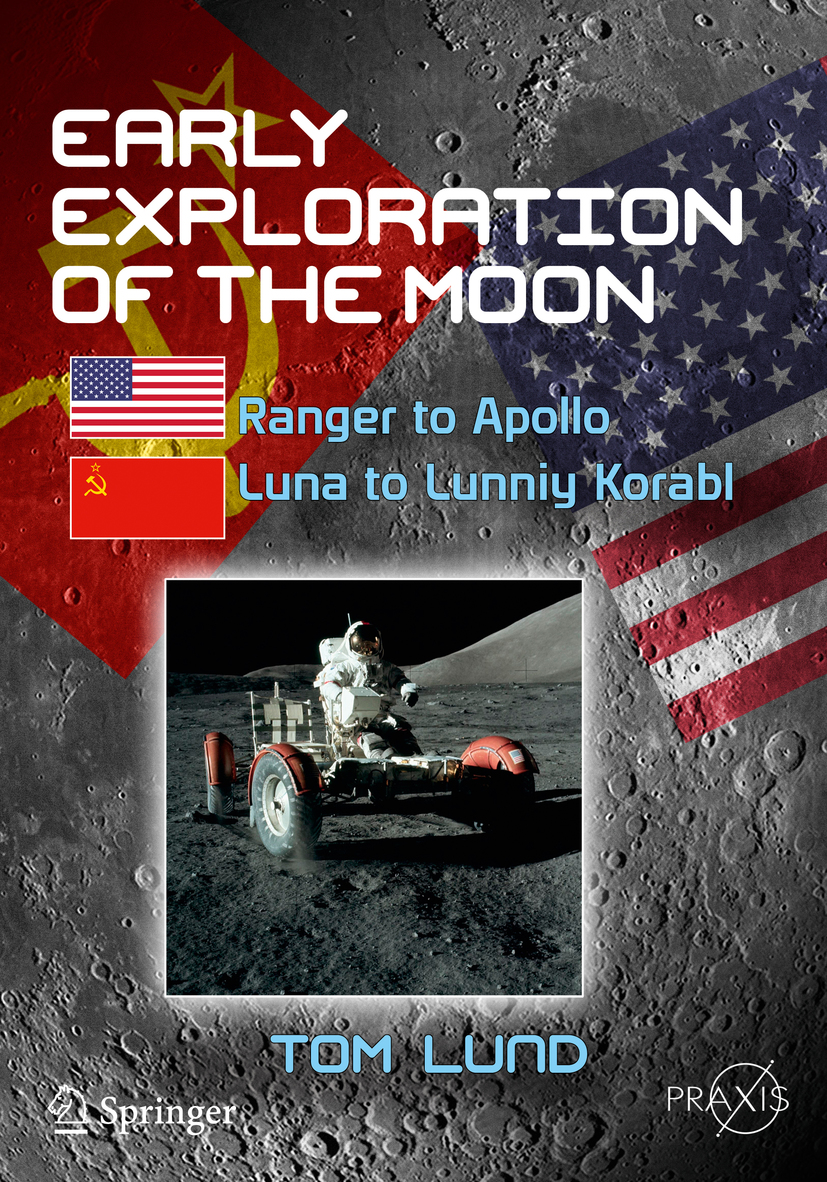
More information about this series at http://www.springer.com/series/4097



Cover design: Jim Wilkie. Image credit: NASA
Project Editor: David M. Harland
This Springer imprint is published by the registered company Springer Nature Switzerland AG
The registered company address is: Gewerbestrasse 11, 6330 Cham, Switzerland
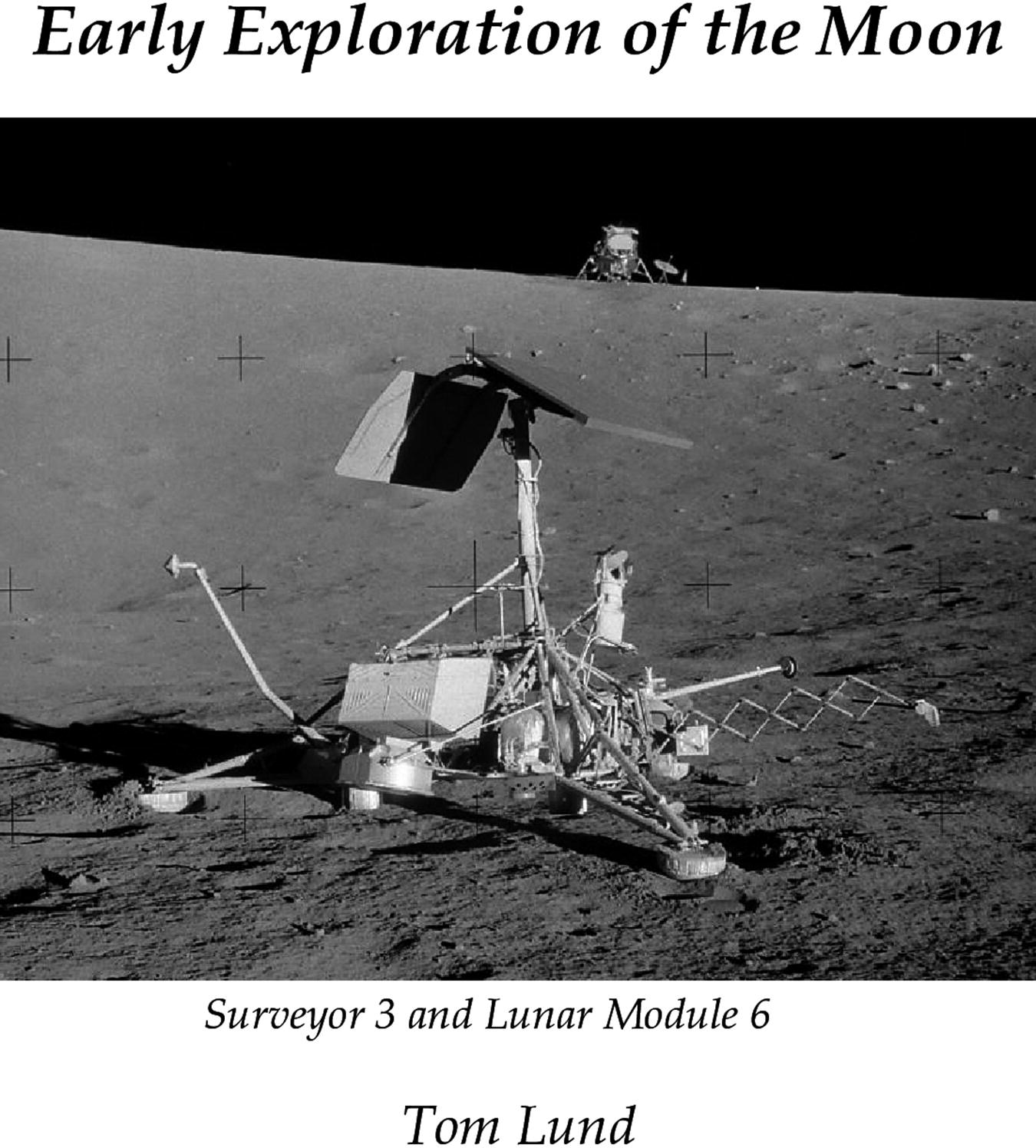
This book is dedicated
to my wife Barbara
and to my children
Ann, Tom, and Colin.
The machines known as spacecraft that enabled early exploration of the moon were ingenious and reflected the best efforts of talented people working with the technology of the day. Those moon-bound spacecraft, designed in the 1960s, were remarkable for their performance, efficiency, and ruggedness. It is instructive to examine these machines and see just how capable they were and how best performance was wrung out of the technology available.
This book covers early lunar exploration efforts by the United States and by the Soviet Union. Russia was the major entity of the Soviet Union at the time, and the development of spacecraft was a Russian endeavor. Early exploration of the moon by the United States involved the Ranger, Lunar Orbiter, Surveyor, and Apollo spacecraft. The exploration advanced from taking photographs as the Ranger hurdled to impact the moon to the impressive manned lunar landing and exploration missions of Apollo. Russian spacecraft that explored the moon included lunar impactors, lunar flyby spacecraft, lunar landers, lunar orbiters, lunar sample return spacecraft, and the capable Lunokhod lunar rovers. The first five of those spacecraft were simply given the name Luna followed by a number. Russian hardware for a manned lunar landing did not rise to the task.
The author had significant responsibility for landing radars for both the Surveyor and Apollo programs. As a result, he had keen interest in all of the space programs during those pioneering years. Writing this book provided opportunity to relive some of those heady times and a chance to use material from his files.
The early space programs took place at a time when there were impressive aeronautical programs in the United States. The SR-71 Blackbird was cruising at Mach 3.2 at 80,000 feet with its crew of two for over 3,000 miles without breaking a sweat, and the X-15 was rocketing along at Mach 6.7 and reaching altitudes of 354,000 feet. The challenges of the difficult Apollo program did not seem insurmountable in that era.
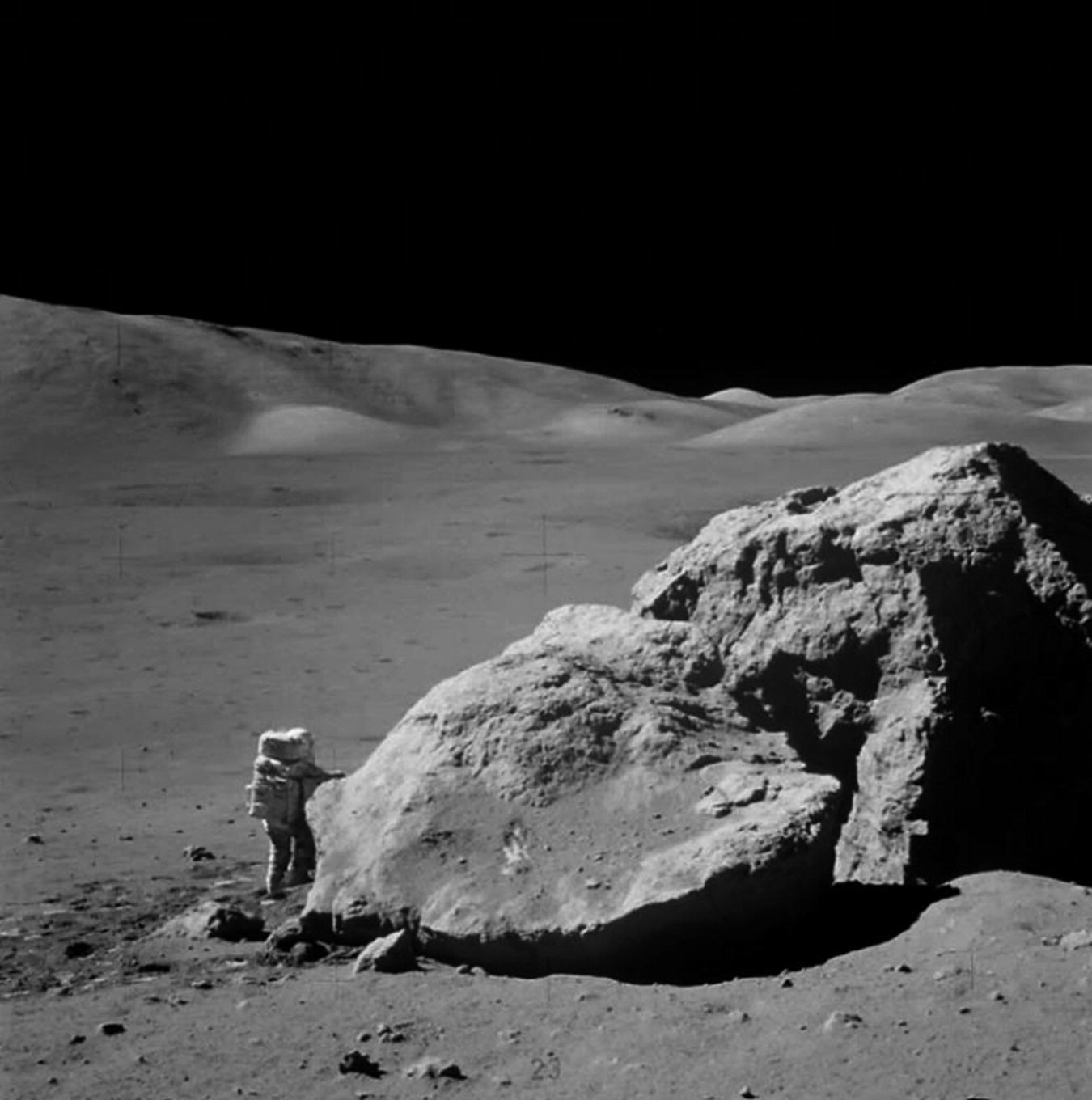
Geologist Harrison Schmitt examining a boulder on the lunar surface (NASA photograph)
Early US hardware built for lunar exploration was dimensioned in English units. The author stuck with that treatment of units for US hardware in this book. An exception is the US Lunar Orbiter that used metric units, and that convention was retained. Russian hardware was dimensioned in metric units, and that convention was retained as well.
The moon is the most imposing feature of the night sky. Much is known about the moon today, thanks in part to exploration by the spacecraft discussed in this book. A few interesting facts about the moon are presented below to set the stage for the discussion of lunar exploration spacecraft that follows.
The moon is a satellite of the earth with an orbital period around the earth of 27.3 days with respect to the stars. The orbit is elliptical with an apogee of 405,504 km (252,022 miles) center-to-center from earth and a perigee of 363,396 km (225,852 miles). Perigee is the distance of closest approach, and apogee is the farthest distance from earth in the orbit. The plane of the moons orbit around the earth is displaced 5.15 degrees from the ecliptic, or plane of the earths orbit around the sun. The axis of rotation of the moon is displaced 6.68 degrees from perpendicular to the plane of the lunar orbit.
Interestingly, the rotation of the moon about its axis is locked to the earth such that the same face of the moon is always presented to the earth. This comes about because of a tidal bulge in the surface of the moon due to the gravity of the earth. This circumstance allows continuous communications from earth to spacecraft on the nearside of the moon. Deep space communications facilities at various locations around the earth allow this continuous communication.
Font size:
Interval:
Bookmark:
Similar books «Early Exploration of the Moon: Ranger to Apollo, Luna to Lunniy Korabl»
Look at similar books to Early Exploration of the Moon: Ranger to Apollo, Luna to Lunniy Korabl. We have selected literature similar in name and meaning in the hope of providing readers with more options to find new, interesting, not yet read works.
Discussion, reviews of the book Early Exploration of the Moon: Ranger to Apollo, Luna to Lunniy Korabl and just readers' own opinions. Leave your comments, write what you think about the work, its meaning or the main characters. Specify what exactly you liked and what you didn't like, and why you think so.

